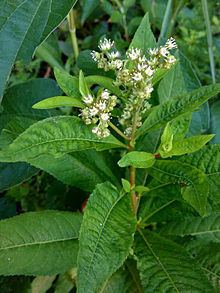Family Penthoraceae Rank Species | Genus Penthorum Higher classification Penthorum | |
 | ||
Similar Penthorum, Penthoraceae, Penthorum chinense, Persicaria hydropiperoides, Lycopus americanus | ||
Penthorum sedoides tropical aquarium plant for beginners
Penthorum sedoides, known by the common name ditch stonecrop, is a perennial forb native to the eastern United States and Canada which produces small white flowers in summer.
Contents
- Penthorum sedoides tropical aquarium plant for beginners
- Penthorum sedoides
- Description
- Distribution and habitat
- References
Penthorum sedoides
Description
Penthorum sedoides is 10 to 80 centimeters tall. The erect lower portion of the stem is smooth, but the curved branching inflorescence is covered in glandular hairs. The lanceolate finely serrated leaves are 2 to 18 centimeters long, and 0.5 to 5.5 centimeters wide. The flowers are about half a centimeter wide, with 10 stamens and no petals. The fruit is a star shaped capsule consisting of 5 carpels united at the base, which turns red in autumn.
Distribution and habitat
Penthorum sedoides is widely distributed in the United States and Canada. It has been recorded in the states of Alabama, Arkansas, Connecticut, Washington, D.C., Delaware, Florida, Georgia, Iowa, Illinois, Indiana, Kansas, Kentucky, Louisiana, Massachusetts, Maryland, Maine, Michigan, Minnesota, Missouri, Mississippi, North Carolina, North Dakota, Nebraska, New Hampshire, New Jersey, New York, Ohio, Oklahoma, Oregon, Pennsylvania, Rhode Island, South Carolina, South Dakota, Tennessee, Texas, Virginia, Vermont, Washington, Wisconsin, and West Virginia, as well as the Canadian provinces of British Columbia, Manitoba, New Brunswick, Ontario, and Quebec. It is listed as a species of special concern by the state of Rhode Island. Penthorum sedoides is only native to the eastern half of the continent, in the Pacific Northwest it is an introduced species found in commercial cranberry bogs. In Virginia, Penthorum sedoides grows in habitats such as alluvial swamps, floodplain pools, rocky or sandy shores, fens, marshes, beaver ponds, and disturbed wetlands.
